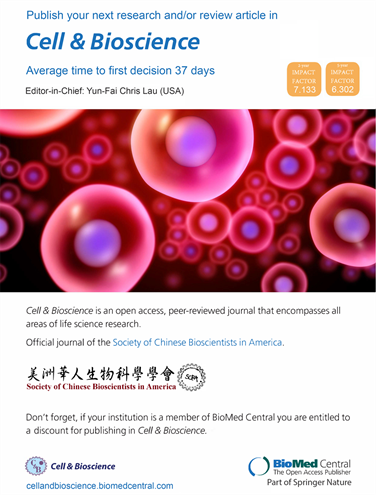Exploring small non-coding RNAs as blood-based biomarkers to predict Alzheimer’s disease
IF 6.1
2区 生物学
Q1 BIOCHEMISTRY & MOLECULAR BIOLOGY
引用次数: 0
Abstract
Alzheimer’s disease (AD) diagnosis relies on clinical symptoms complemented with biological biomarkers, the Amyloid Tau Neurodegeneration (ATN) framework. Small non-coding RNA (sncRNA) in the blood have emerged as potential predictors of AD. We identified sncRNA signatures specific to ATN and AD, and evaluated both their contribution to improving AD conversion prediction beyond ATN alone. This nested case–control study was conducted within the ACE cohort and included MCI patients matched by sex. Patients free of type 2 diabetes underwent cerebrospinal fluid (CSF) and plasma collection and were followed-up for a median of 2.45-years. Plasma sncRNAs were profiled using small RNA-sequencing. Conditional logistic and Cox regression analyses with elastic net penalties were performed to identify sncRNA signatures for A+(T|N)+ and AD. Weighted scores were computed using cross-validation, and the association of these scores with AD risk was assessed using multivariable Cox regression models. Gene ontology (GO) and Kyoto encyclopaedia of genes and genomes (KEGG) enrichment analysis of the identified signatures were performed. The study sample consisted of 192 patients, including 96 A+(T|N)+ and 96 A-T-N- patients. We constructed a classification model based on a 6-miRNAs signature for ATN. The model could classify MCI patients into A-T-N- and A+(T|N)+ groups with an area under the curve of 0.7335 (95% CI, 0.7327 to 0.7342). However, the addition of the model to conventional risk factors did not improve the prediction of AD beyond the conventional model plus ATN status (C-statistic: 0.805 [95% CI, 0.758 to 0.852] compared to 0.829 [95% CI, 0.786, 0.872]). The AD-related 15-sncRNAs signature exhibited better predictive performance than the conventional model plus ATN status (C-statistic: 0.849 [95% CI, 0.808 to 0.890]). When ATN was included in this model, the prediction further improved to 0.875 (95% CI, 0.840 to 0.910). The miRNA-target interaction network and functional analysis, including GO and KEGG pathway enrichment analysis, suggested that the miRNAs in both signatures are involved in neuronal pathways associated with AD. The AD-related sncRNA signature holds promise in predicting AD conversion, providing insights into early AD development and potential targets for prevention.探索将小非编码 RNA 作为血液生物标记物来预测阿尔茨海默病
阿尔茨海默病(AD)的诊断依赖于临床症状,并辅以生物标志物,即淀粉样蛋白-头绪神经变性(ATN)框架。血液中的小非编码RNA(sncRNA)已成为AD的潜在预测因子。我们确定了ATN和AD的sncRNA特征,并评估了它们对改善AD转换预测的贡献,而不仅仅是ATN。这项巢式病例对照研究是在 ACE 队列中进行的,包括按性别匹配的 MCI 患者。无2型糖尿病的患者接受了脑脊液(CSF)和血浆采集,随访时间中位数为2.45年。血浆中的 sncRNA 采用小 RNA 测序技术进行分析。利用弹性净惩罚进行条件逻辑和 Cox 回归分析,以确定 A+(T|N)+ 和 AD 的 sncRNA 特征。利用交叉验证计算加权分数,并利用多变量 Cox 回归模型评估这些分数与 AD 风险的关联。对识别出的特征进行了基因本体(GO)和京都基因和基因组百科全书(KEGG)富集分析。研究样本由 192 名患者组成,包括 96 名 A+(T|N)+ 和 96 名 A-T-N- 患者。我们根据 ATN 的 6-miRNA 特征构建了一个分类模型。该模型可将 MCI 患者分为 A-T-N- 组和 A+(T|N)+ 组,其曲线下面积为 0.7335(95% CI,0.7327 至 0.7342)。然而,将该模型加入常规风险因素后,对AD的预测效果并没有超过常规模型加ATN状态(C统计量:0.805 [95% CI, 0.758 to 0.852]与0.829 [95% CI, 0.786, 0.872]相比)。与传统模型加 ATN 状态相比,AD 相关的 15-sncRNAs 特征具有更好的预测性能(C 统计量:0.849 [95% CI, 0.808 to 0.890])。将 ATN 纳入该模型后,预测结果进一步提高到 0.875(95% CI,0.840 至 0.910)。miRNA 与目标相互作用网络和功能分析(包括 GO 和 KEGG 通路富集分析)表明,这两个特征中的 miRNA 都参与了与 AD 相关的神经元通路。AD相关的sncRNA特征有望预测AD的转化,为早期AD的发展和潜在的预防目标提供洞察力。
本文章由计算机程序翻译,如有差异,请以英文原文为准。
求助全文
约1分钟内获得全文
求助全文
来源期刊

Cell and Bioscience
BIOCHEMISTRY & MOLECULAR BIOLOGY-
CiteScore
10.70
自引率
0.00%
发文量
187
审稿时长
>12 weeks
期刊介绍:
Cell and Bioscience, the official journal of the Society of Chinese Bioscientists in America, is an open access, peer-reviewed journal that encompasses all areas of life science research.
 求助内容:
求助内容: 应助结果提醒方式:
应助结果提醒方式:


